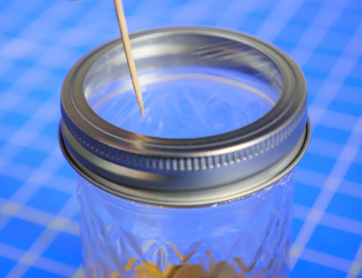Apple Peels: A Surprising Treasure in Your Kitchen
Have you ever wondered what to do with all those apple peels after making pies, sauces, or snacks? Instead of tossing them in the trash, consider giving these scraps a second life. Apple peels are a versatile kitchen treasure that can be transformed into delicious and practical products, reducing waste and making the most of your ingredients. In this guide, we’ll explore how to turn apple peels into homemade apple cider vinegar (ACV) and discover various ways to use this magical pantry staple, including an effective method for catching pesky fruit flies.
Turning Apple Peels into Homemade Apple Cider Vinegar
Apple cider vinegar is a popular ingredient known for its culinary, health, and household uses. Making it at home is not only satisfying but also a great way to upcycle those apple scraps. Here’s how to do it:
Homemade Apple Cider Vinegar Recipe
Ingredients:
- Apple peels and cores (from about 6-8 apples)
- 2 tablespoons sugar
- Water (enough to cover the peels)
- A large glass jar
- Cheesecloth or coffee filter
Instructions:
- Prepare the Jar: Place the apple peels and cores in a clean glass jar. If you have cores, be sure to remove any seeds as they can add bitterness.
- Add Sugar and Water: Sprinkle the sugar over the peels and cover them with water, leaving about an inch of space at the top of the jar.
- Stir and Cover: Stir the mixture until the sugar dissolves. Cover the jar with cheesecloth or a coffee filter and secure it with a rubber band. This allows the mixture to breathe while keeping bugs out.
- Ferment: Place the jar in a warm, dark place, like a cupboard, and let it sit for about 3-4 weeks. Stir the mixture every few days, checking for any mold, which you should remove if it appears.
- Strain and Continue Fermenting: After 3-4 weeks, strain out the solids and transfer the liquid back into the jar. Cover it again and let it sit for another 3-4 weeks to continue fermenting.
- Taste and Store: Taste the vinegar. When it reaches the desired acidity, transfer it to a sealed bottle and store it in a cool, dark place. It will keep for up to a year.
Practical Uses for Apple Cider Vinegar
Homemade apple cider vinegar can be used in many ways around the kitchen and home. Here are some of the best uses:
Soothing Sore Throats:
Gargling with a mix of warm water, honey, and ACV can provide temporary relief from a sore throat.
Hair Rinse:
A diluted solution of ACV can help remove product buildup, add shine, and balance scalp pH after shampooing.
Skin Toner:
Dilute ACV with water and apply it as a toner to help balance your skin’s pH and fight breakouts.
Culinary Marvel:
Use it in salad dressings, marinades, and sauces to add a tangy kick.
Natural Cleaner:
Mix equal parts water and ACV in a spray bottle for a natural, non-toxic cleaner that’s perfect for countertops and glass.
Digestive Aid:
A tablespoon of ACV in a glass of water can support digestion and balance stomach acidity.
Fruit Fly Trap:
- If your kitchen is plagued by fruit flies, apple cider vinegar can come to the rescue. Fruit Fly Trap Instructions:
- Pour apple cider vinegar into a small mason jar.
- Replace the middle piece of the jar lid with a piece of saran wrap and screw the outer ring of the lid on tightly.
- Use a pencil tip or similar object to poke small holes in the plastic wrap, creating openings large enough for fruit flies to enter but small enough that they cannot escape.
- Place the trap where the flies are most active. The scent of the vinegar will attract them, and they’ll be unable to find their way out.

Embrace the Art of Upcycling
Upcycling apple peels into homemade apple cider vinegar not only helps reduce waste but also opens the door to a wide array of uses that go beyond the kitchen. From enhancing your recipes to creating an effective fruit fly trap, this simple transformation embodies the essence of culinary creativity and sustainability. So next time you’re peeling apples, remember that those scraps are more valuable than you might think—transform them into something special and make every bit count. For more inspiration, check out our article on Culinary Upcycling: Transforming Food Scraps into Delicious Dishes.


